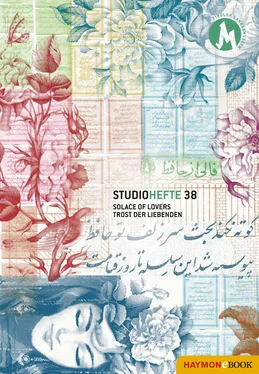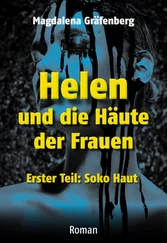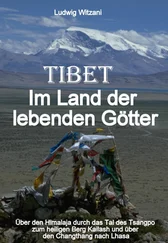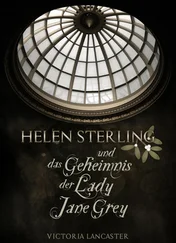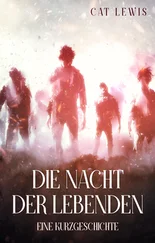The mineralogist Czarnotta, who was highly expert in his field, had the misfortune to be a spiritualist; he was always plagued by mountain spirits. A deeply mistrustful person, he sought to conceal every find. He always marked them with ciphers of his own invention lest someone try to rob him of his claim to priority. He explored the mineral treasures on Mount Damavand and in August 1853 decided to climb it. Out of sheer fear of being murdered, he climbed the mountain without a guide, lost his way, and had to spend the night in a solfatare to avoid freezing to death. The villagers sent after him found him frozen stiff and carried him back down. When he recovered, he treated the harmless people as thieves and murderers and demanded that they be punished. A few months later he undertook another expedition; a broken and mentally disturbed man, he spurned the use of quinine in a severe bout of malaria and died from the fever. His extensive collection and records were all found to be in encoded form. They were sent to Europe but were lost en route without trace. A sad outcome for science!
To complete the picture, I hope I will be forgiven for saying a few words about myself. I was assigned 22 students, whom I was to train to become Hakims (doctors). I sought to discharge my duties more efficiently by quickly learning the Persian language. After eight months, I was in a position to teach without the help of an interpreter. One of my paramount duties was to establish the terminology, and I consider this arduous task to be my greatest achievement, because the right word for a particular concept is the basis for all future research and progress. It was in no way my ambition to produce fully qualified doctors; the individual is much too weak for that, and I lacked the necessary teaching materials. I merely wished to lay the foundations for an enlightened understanding of nature and to train doctors to the level of the barber surgeons formerly produced by our basic courses at home, some of whom could then continue their training at a European university, as was later the case. I taught anatomy from a skeleton, specimens, drawings and animal dissections, as well as physiology, external and internal pathology and oculistics; I also had the manuals in each subject lithographed. During the numerous operations I performed – I conducted 156 operations for stones, for example – I was attended and assisted by my students, some of whom became very good surgeons and are still frequently consulted – even by Europeans – today. I was the first in Persia to perform painless surgery using anaesthesia, to the astonishment of all.
There were no military physicians in Persia, nor were there any civil or military hospitals. In military campaigns the seriously wounded usually perish. The stuffed scalps of the enemy are placed on pikes and carried home as trophies. The fact that many a scalp of one’s own soldiers also finds its way into the collection is an excusable failing in the quest for gloire. My ambition was to build a military hospital, and after some difficulties I was successful. When the building was finished, however, I was provided with neither gowns nor straw sacks nor sheets, beds being considered unnecessary in a country where everyone sleeps on the ground in any case, and the soldiers refused to perform guard and attendant duties because they said they had only been recruited for war. After significant sacrifices of time and my own money, I had to abandon the project as an impossibility; however, as I have since heard by letter, the idea was taken up again and the first model hospital is now in use for sick soldiers. I also sent a good student to the area around Zanjan in order to improve the lot of the unfortunate lepers there. This disease, once widespread in Europe – hence the leprosariums – is still to be found in some parts of northwest Persia; the unfortunates – rightly expelled from their towns and villages – live miserable lives in wretched mud huts far from all human settlement. Here, too, I found that the food the king had arranged to be distributed to the unfortunates was charged for but never delivered. This is how Orientals are: they would never refuse a morsel of bread to the hungry, not even to a dog, even if it meant going without themselves, but they have no compunction about depriving the absent of their rights.
Upon the death in 1855 of Dr. Cloquet from the famous Cloquet family of scholars, I was appointed royal personal physician, Muqarrab al-Khaqan (Privy Councillor) and also General in partibus infidelium. My duties from then on were both difficult and simple, as one takes it, for I was not born to be a courtier. I strove to teach the otherwise healthy king and to give him a good grounding in history, geography and the like; I also taught him the French language, in which he is now quite proficient. Since, like all Austrians, I took pride in never begging for anything, the emoluments were hardly adequate in relation to the manifold services provided. Sometimes my functions were heterogeneous. When I once accompanied the king to an artillery target shooting exercise, for example, he ordered me to aim a cannon. I was so happy not to have killed any of the attendants standing around the target!
In the spring of 1860, I returned to Europe. As I had written books, had saved the lives of many poor people by operating on them, was versed in Persian calembours and had also dabbled in poetry, I left behind a memory secured through deeds and words – or so I believe.
Since that time, in addition to my practice, I have continued to occupy myself with Persia; I have acclimatised various plants, written a book about the country and its people (Leipzig 1865) and other medical and technical essays for scientific journals, because through my dealings with all social classes and my travels I became better acquainted with the country and its products than other Europeans and even natives. This made it possible for me to write a manual for participation in the World’s Fair, where I was appointed Imperial Austrian Commissioner, which was translated into Persian and sent to Tehran as a guide for the Persian delegation 4 . In addition, I sought to contribute to that global undertaking by writing the catalogue and the official exhibition report.
Finally, I would beg you to excuse many a word of self-praise, not with Goethe’s saying about modesty but with a tame xenia from the “West-Eastern Diwan”:
“Before, the boast was not your style.
Where have you learnt to boast the while?
The Orient taught me the boast’s essentials:
But now I’m back on western ground,
where to my relief I find and found
some hundreds who are Orientals.”
I would also like to say a few words about our successors, the last-but-not-leasts who were certainly not epigones but whose work was facilitated by the active support provided by the Austrian legation since established there.
Shortly after our departure, Dervish Hermann Vámbéry arrived in the country. He visited several parts of the empire and various cities as a dervish and also spent a few months in Tehran in the Turkish legation hotel in order to prepare for his long journey to Bukhara, Samarkand and Herat. The art of understanding foreign customs and circumstances may be something that Vámbéry shares with many others, but what makes him so special is his ability to adapt to foreign customs, traditions and languages so well that he can be taken for a native and can even play the part of the dervish minstrel and endure hunger, thirst, heat or the third Egyptian plague. The range of his experiences was so overwhelming that one was initially tempted to consider the reports apocryphal. Whereas the re-habilitation of Marco Polo was a process that lasted centuries, in our fast-living age a few years and confirmation from Russian and Asian witnesses – for the mountain came to Muhammad – were enough to bring the truth to light. Vámbéry is rightly regarded as the leading authority on Central Asia – including Afghanistan and its neighbouring countries – but he also has an open eye for Iran. Should a commemorative coin be struck in his honour, I would propose the following inscription by analogy with Sassanian coins: Hekim Ilan u Anilan, i.e. researcher on Iran and Turan.
Читать дальше
